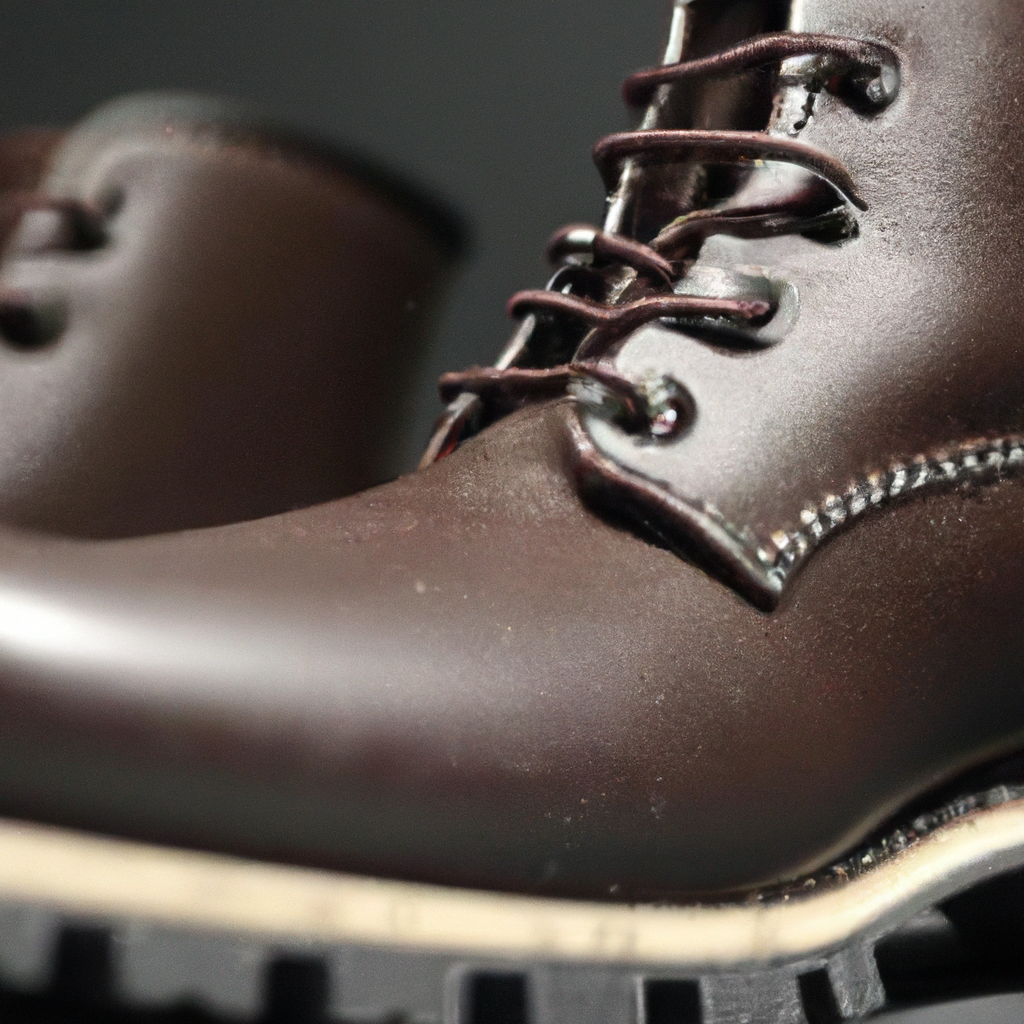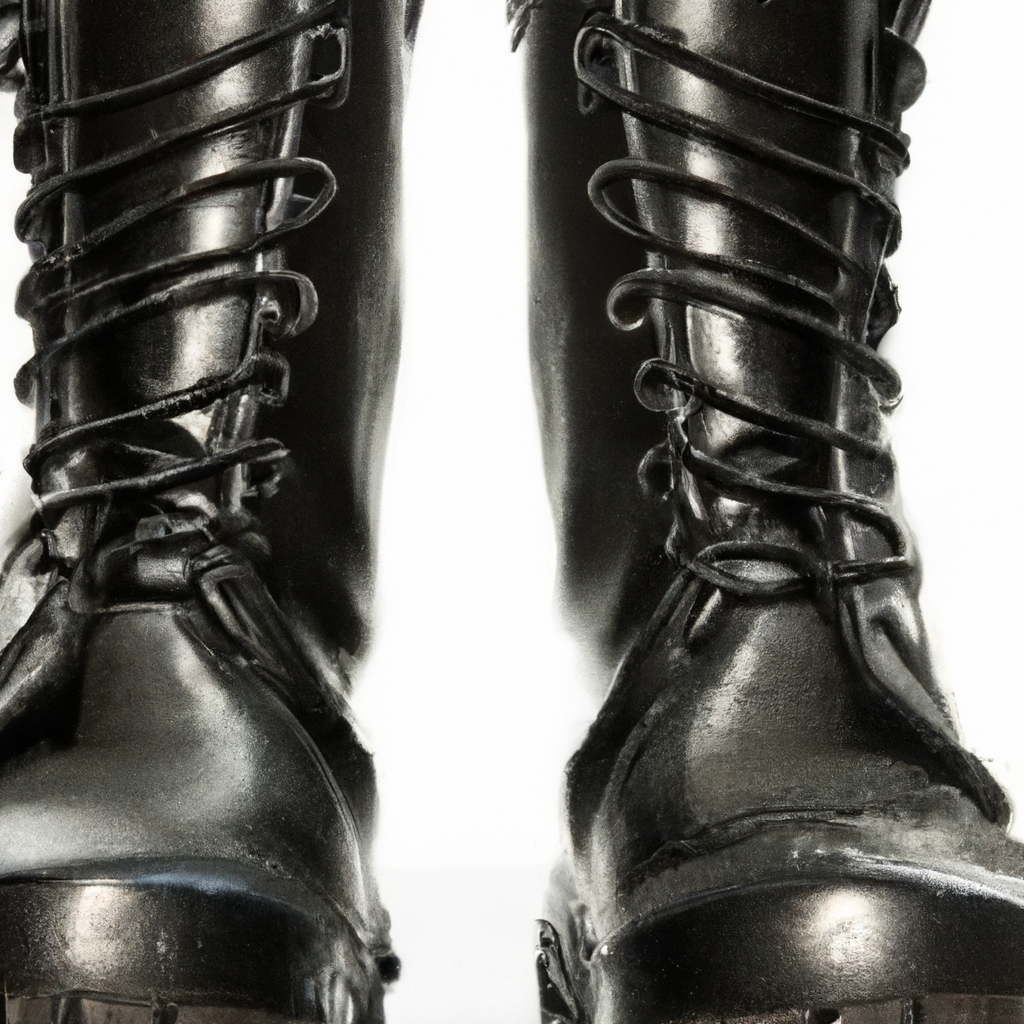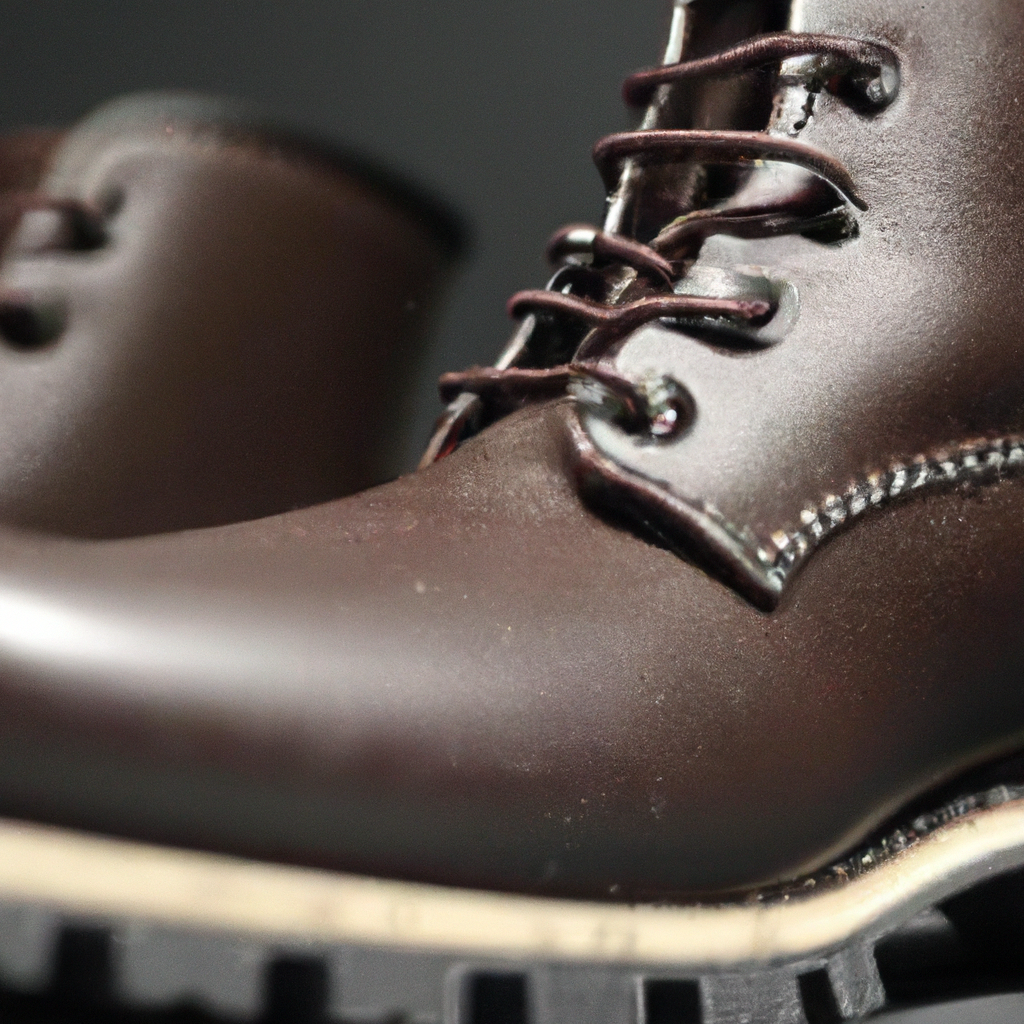Rigger boots are a type of work boot that offer both comfort and safety for various industries. Designed with a high ankle and sturdy construction, these boots provide excellent support and protection for workers who often find themselves navigating through rough terrains or working at heights. With their slip-resistant soles and steel toe caps, rigger boots ensure that your feet are well-protected from potential hazards and accidents. Whether you’re in construction, agriculture, or any other field that requires tough footwear, knowing about rigger boots is essential for staying safe and comfortable on the job.

What is a Rigger Boot?
A rigger boot is a type of work boot that is specifically designed to provide protection and support for individuals working in demanding environments. Originally created for workers rigging ships, hence the name “rigger boot,” these boots have become popular in a variety of industries such as construction, oil and gas, and agriculture. Rigger boots are known for their durability, comfort, and ability to withstand the toughest conditions.
Materials Used in Rigger Boots
Leather
One of the most common materials used in rigger boots is leather. Leather rigger boots are highly durable and provide excellent protection against impacts and abrasions. They are also naturally water-resistant and allow the feet to breathe, preventing them from becoming sweaty and uncomfortable.
Synthetic Materials
In addition to leather, rigger boots can also be made from various synthetic materials such as PVC or PU. Synthetic rigger boots are often more affordable than their leather counterparts and can offer similar levels of durability and water resistance. However, they may not provide the same breathability and can sometimes lack the same aesthetic appeal as leather boots.
Composite Materials
Some rigger boots are made with composite materials, such as reinforced fibers or polymers. These boots are designed to provide the same level of protection as traditional steel-toe boots but with the added benefit of being lighter and non-metallic. Composite rigger boots are ideal for individuals working in environments where metal detectors are used, as they do not trigger alarms.
Key Features of Rigger Boots
Slip-Resistant Soles
One of the essential features of rigger boots is their slip-resistant soles. These soles are specifically designed to provide excellent traction on slippery surfaces, ensuring the safety of the wearer. Whether you’re walking on muddy terrain or oily surfaces, the slip-resistant soles of rigger boots will help prevent accidents and falls.
Steel Toe Caps
Rigger boots are equipped with steel toe caps to protect the wearer’s feet from falling objects and compression hazards. The steel toe caps meet safety standards and can withstand significant impacts, ensuring that your toes remain safe and protected in hazardous work environments.
Pull-On Design
Rigger boots are known for their convenient pull-on design. This feature allows you to easily put on and take off your boots, saving you time and effort throughout the day. With no laces to tie or fasteners to adjust, rigger boots offer a hassle-free experience, especially for individuals who are constantly on the move.
Waterproofing
Many rigger boots are designed with waterproof features to keep your feet dry in wet and rainy conditions. Whether you’re working in a muddy construction site or trudging through puddles, waterproof rigger boots will prevent water from seeping into your boots, keeping your feet comfortable and protected from moisture-related issues.
Ankle Support
Another key feature of rigger boots is their excellent ankle support. The higher length of rigger boots provides stability and reduces the risk of ankle injuries, especially in uneven terrains. With reinforced ankle support, rigger boots offer the necessary protection and stability for those working on challenging surfaces.
Different Types of Rigger Boots
Basic Rigger Boots
Basic rigger boots are the standard option available in the market. They provide the essential features mentioned earlier, such as slip-resistant soles, steel toe caps, and ankle support. These boots are suitable for a wide range of industries and offer reliable protection and comfort for general work environments.
Insulated Rigger Boots
Insulated rigger boots are specifically designed for individuals working in cold weather conditions. These boots are lined with an insulating material to keep the feet warm and provide additional protection against the cold. Insulated rigger boots are ideal for those working outdoors or in cold storage facilities.
Metatarsal Rigger Boots
Metatarsal rigger boots offer enhanced protection for the metatarsal bones of the foot, which are prone to injuries from heavy objects or impacts. These boots feature an extra layer of protection over the area of the foot just above the toes. If you work in an environment where metatarsal injuries are a concern, such as construction sites, metatarsal rigger boots are an excellent choice.
Electrical Hazard Rigger Boots
For workers in electrical or hazardous environments, electrical hazard rigger boots are a must-have. These boots are designed to provide protection against electrical shocks by incorporating specialized soles and materials that are resistant to electricity. Electrical hazard rigger boots meet strict safety standards and are crucial for ensuring the safety of workers in these high-risk environments.

Choosing the Right Size
Measuring Your Feet
Properly measuring your feet is the first step in finding the perfect fit for your rigger boots. Using a measuring tape or a foot measuring device, measure the length and width of your feet. It is important to measure both feet, as they can sometimes vary in size.
Considering Sock Thickness
When trying on rigger boots, keep in mind the thickness of the socks you will typically wear while working. If you usually wear thick socks, it is recommended to try on the boots with those socks to ensure a comfortable fit. Socks can significantly impact the fit of the boots, so it’s crucial to consider this when choosing the right size.
Trying them On
Since comfort is key when it comes to rigger boots, it is essential to try them on before making a purchase. Walk around in the boots and check for any discomfort or pressure points. It is normal to experience some stiffness in new boots, but they should not cause excessive pain or discomfort. If they do, consider trying a different size or style.
Allowing for Toe Movement
When trying on rigger boots, ensure that there is enough room for your toes to move freely. Your toes should not be cramped or pressed against the front of the boot. Having some wiggle room for your toes is important for comfort and circulation. If your toes feel restricted, it may be necessary to size up.
How to Care for Rigger Boots
Cleaning and Maintenance
Regular cleaning and maintenance are essential to prolong the lifespan of your rigger boots. Wipe off any dirt or debris with a damp cloth and use a soft brush to remove stubborn stains. Avoid using harsh chemicals or abrasive cleaners, as they can damage the materials of the boots. Instead, use a mild soap or specialized boot cleaner.
Conditioning the Leather
If your rigger boots are made of leather, conditioning them is important to keep the leather supple and prevent it from drying out or cracking. Apply a leather conditioner or boot oil to the boots, following the manufacturer’s instructions. This will help maintain the integrity of the leather and keep it looking its best.
Handling Waterproof Boots
If you have waterproof rigger boots, it’s crucial to properly maintain their waterproofing capabilities. After cleaning the boots, apply a waterproof spray or wax to the surface to restore and enhance their water resistance. Regularly reapplying the waterproofing treatment will help keep your feet dry in wet conditions.
Replacing Insoles
Over time, the insoles of your rigger boots may wear out or become less comfortable. It is advisable to replace the insoles regularly to ensure optimal support and cushioning for your feet. You can find various types of replacement insoles that cater to different foot needs, such as extra arch support or shock absorption.
Benefits of Wearing Rigger Boots
Durability and Longevity
Rigger boots are known for their exceptional durability and longevity. Their construction and choice of materials make them highly resistant to wear and tear, allowing them to withstand the most demanding work environments. Investing in a pair of rigger boots means you can rely on them to withstand the test of time.
Versatility for Various Work Environments
Whether you work in construction, agriculture, or any other industry that requires sturdy footwear, rigger boots are incredibly versatile. They are designed to handle different work conditions and provide the necessary protection and support. With various types of rigger boots available, you can find the perfect pair to suit your specific work environment.
Comfort and Support
Comfort is a top priority when it comes to work boots, and rigger boots deliver. The slip-resistant soles, steel toe caps, and ankle support all contribute to the overall comfort and stability they provide. The pull-on design eliminates the need for laces, reducing pressure points and increasing convenience.
Protection from Workplace Hazards
Rigger boots are designed to meet safety standards and protect your feet from various workplace hazards. Steel toe caps guard against falling objects, slip-resistant soles prevent accidents on slippery surfaces, and ankle support reduces the risk of twisting or spraining. With rigger boots, you can confidently work in hazardous environments knowing your feet are well protected.
Common Safety Standards for Rigger Boots
EN ISO 20345
EN ISO 20345 is the European standard for safety footwear, including rigger boots. This standard specifies the requirements for safety shoes and boots regarding impact resistance, compression resistance, and other protective features. Look for the EN ISO 20345 certification when purchasing rigger boots to ensure they meet European safety standards.
ASTM F2413
ASTM F2413 is the American standard for performance requirements of protective footwear, including rigger boots. This standard covers various safety features, such as impact resistance, compression resistance, and electrical hazard protection. Look for the ASTM F2413 certification when purchasing rigger boots for work in the United States.
CSA Z195
CSA Z195 is the Canadian standard for protective footwear, including rigger boots. This standard outlines the performance requirements for safety footwear in Canada, including impact resistance, penetration resistance, and electric shock resistance. Look for the CSA Z195 certification when purchasing rigger boots for work in Canada.
Frequently Asked Questions
Are rigger boots suitable for outdoor work?
Yes, rigger boots are highly suitable for outdoor work. Their durable construction and slip-resistant soles make them ideal for rugged terrains, muddy conditions, and uneven surfaces. Additionally, many rigger boots offer waterproofing features, further enhancing their suitability for outdoor work environments.
Can rigger boots be worn in cold weather?
Yes, rigger boots can be worn in cold weather, especially if you opt for insulated rigger boots. The insulation provides extra warmth and helps to keep your feet comfortable in low temperatures. If you work in extremely cold conditions, you can also consider wearing thick thermal socks for additional insulation.
Are rigger boots waterproof?
Not all rigger boots are waterproof, but many are specifically designed to be water-resistant or waterproof. Check the product specifications or labels to determine if the rigger boots you are considering have waterproofing features. Waterproof rigger boots are particularly useful for individuals working in wet or rainy environments.
How often should rigger boots be replaced?
The lifespan of rigger boots depends on various factors, such as the frequency of use, the intensity of work, and the general wear and tear. As a general guideline, it is recommended to replace rigger boots every six months to two years, depending on their condition. Regularly inspecting the boots and replacing them when signs of excessive wear or damage are evident will help ensure continued safety and comfort.
Conclusion
Rigger boots are a reliable and essential companion for individuals working in demanding environments. With their durable construction, slip-resistant soles, and steel toe caps, they provide the necessary protection, comfort, and support needed to tackle the challenges of various work environments. Whether you’re working in construction, agriculture, or any other industry that requires robust footwear, rigger boots are designed to meet safety standards and keep your feet safe from workplace hazards. By choosing the right size, properly caring for them, and understanding the different types and safety standards, you can confidently select a pair of rigger boots that will serve you well for years to come.




